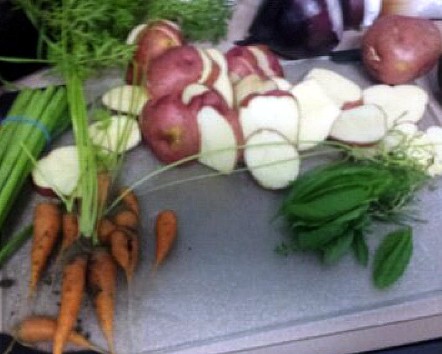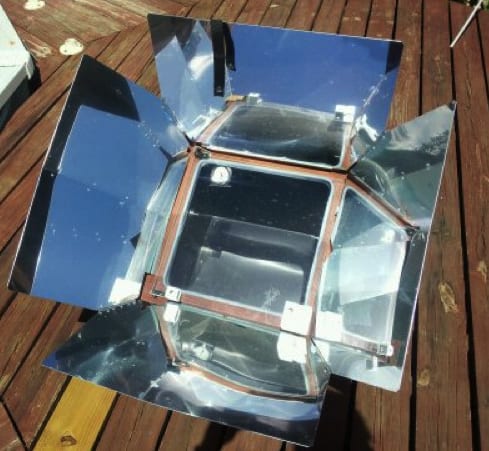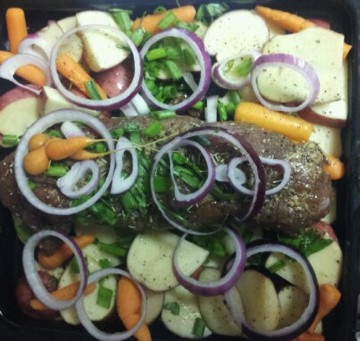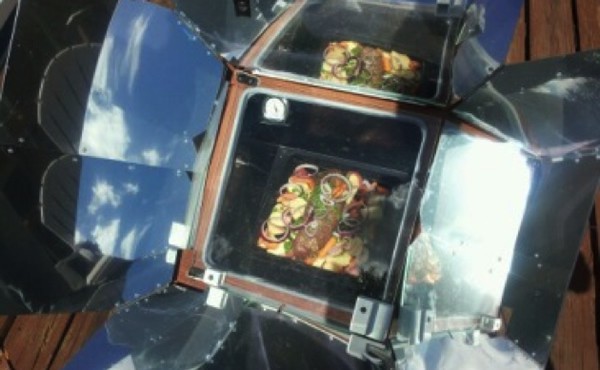Today, I want to switch gears from my usual fare and discuss something a little different. Each month, I want to try and accomplish a routine task completely “Off-Grid.” This month, special thanks to a decent little garden, I wanted to do an article on a project that includes – as close to exclusively as possible – things that I’m growing myself.
Because there are so many more qualified and experienced speakers on this subject, I rarely veer into the realm, although it’s one I enjoy very much: Cooking.
There are many reasons to love cooking. First, it’s cathartic. Sure, it’s a chore, but it’s a chore that gives you time to listen to good music, think, and perhaps most importantly, it’s a task that bears results directly related to your skill and effort. Where some folks see the aftermath of cooking as dishes, I look at it as a chance to sit with my loved ones and spend time letting the day end with good food.
Quite simply, cooking is one of the fastest routes to bonding. A shared meal has a casting effect on friendships and if there is one thing that no one hates, it’s a good meal. So, with an increasingly imperiled future and so much uncertainty, I wanted to share a project: Cooking off grid and from my own yield.*
[*I didn’t grow the pork roast, and had to augment the red potatoes.]
I wanted make a meal that only included ingredients that I’m growing myself, except the roast, pepper, and a bit of running water. Everything else, I wanted to do with vegetables I planted, or in the case of those that I didn’t have ready to use, vegetables that I would have soon. So here was the bounty, and the recipe:

-2 cups of carrots
-4 cups of sliced red potatoes
-A handful of mixed herbs from the garden – I used:
- English thyme
- Thai basil
- Rosemary
- Oregano
- A half cup of chives
-One 2 lb. pork roast, seasoned with pepper and salt
To cook, it’d be easy enough to pick the low hanging fruit and cook on the grill/smoker, but I wanted to try something a bit different – I planned to use the power of the sun to cook my meal. I wanted to use a recently purchased Sun Oven that I picked up from PrepareDirect.

 To prepare, the Sun Oven has to be set out and calibrated (note the small circle on the bottom left bracket that ‘guides’ the user to the best angle and orientation) and then allowed to heat. To my surprise, it hit ~300 degrees Fahrenheit in about 25 minutes. It’s important at this point to mention that you have to continually check and orient the oven. I ended up adjusting it three times, in minor ways.
To prepare, the Sun Oven has to be set out and calibrated (note the small circle on the bottom left bracket that ‘guides’ the user to the best angle and orientation) and then allowed to heat. To my surprise, it hit ~300 degrees Fahrenheit in about 25 minutes. It’s important at this point to mention that you have to continually check and orient the oven. I ended up adjusting it three times, in minor ways.
So, to prepare the meal, I use olive oil to coat the bottom of the bake tray, and tossed in the potatoes and carrots, mixing them with the oil and a bit of ground black pepper. After this, I added some of the herbs to the base, so that the flavor would convect into the meat.
With the stage set, I set the roast onto the vegetables and spices and generously peppered it, covered it in basil and rosemary, and garnished it with red onions. The resulting dish was then set up in the oven to cook at 300°F for a few hours. Unfurled and in all its glory, the Sun Oven was left to do its thing. Naturally, the next few hours were discretionary. So, if you’re in the mood for libations, and you’re recreating my meal, I suggest:
Fill an 8-ounce cup with ice, and add:
- 1 ounce of gin
- one-half lime
- 6 ounces of tonic water
Stir to perfection and enjoy! Maybe twice. It’ll be a refreshing and delicious addition to the meal.

At last, the meal is cooked to perfection after about 2.5 hours.
The final results were – as advertised – delicious and cooked thoroughly. The meat was tender and not dry in the least. It was an interesting and rewarding experience, and while the Sun Oven is still an overall second-place contender for “alternative cooking” (there’s not much that can beat a wood-fire grill), it definitely has merits.
For one thing, the Sun Oven could easily be packed up and taken on the road. Its light weight and relatively small size makes it a good choice for camping and times when burning an outdoor fire is extremely dangerous (like during these extreme drought conditions).
On the negative side of things, it requires a lot of adjustment, and you really need to plan to use it around the weather. While this wasn’t an issue for me, I can see how someone would be very agitated starting their meal in the Sun Oven if a summer storm develops and there goes your heat source. It’s a “best-case scenario” device and might be difficult to get good results with at high latitude, but if you’re in the Sun Belt, it’s a handy item to have as part of your preps that will allow you to both cook and dehydrate fruits & vegetables using just the power of the sun.
If you have tried cooking with a Sun Oven or solar cooker, please share your experiences, tips, and recipes in the comments, below and also check out the other WSID article on Cooking with the Sun.
Cheers,
~ Aaron
This is a companion discussion topic for the original entry at https://peakprosperity.com/off-grid-food-prep/